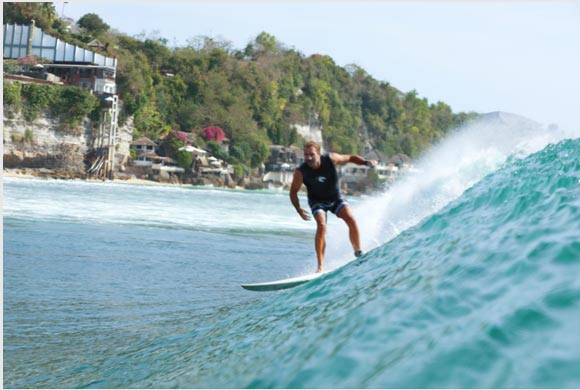SURF TRIP TIPS: PLAN YOUR ULTIMATE SURF ADVENTURE
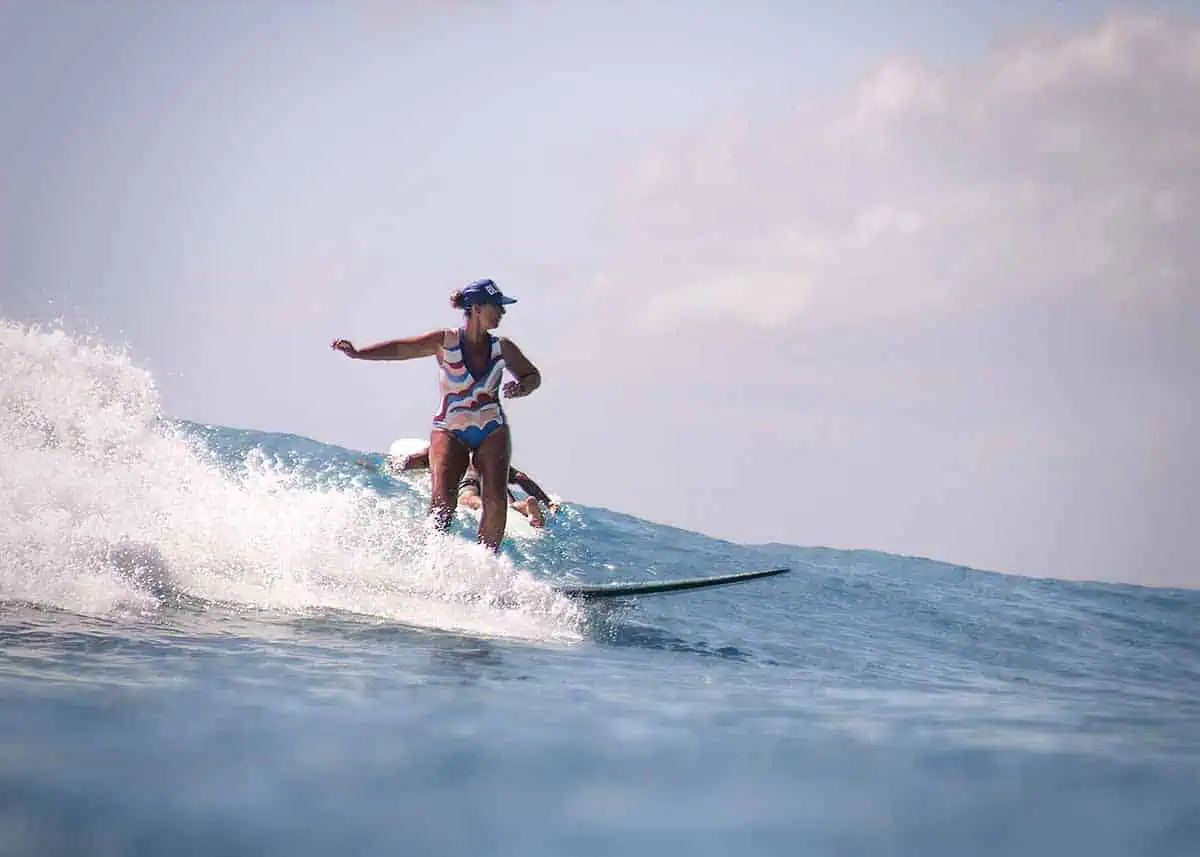
How To Plan The Perfect Surf Trip
Setting off on a surf trip is an adventure many fantasize about. Nonetheless, identifying the ideal wave can sometimes be a bit challenging. The goal is a seamless transition – from riding exceptional waves at beach breaks or point breaks to immersing yourself in local culture.
But absent proper planning, there’s a possibility you might miss what could have been the surf session of your lifetime.
A crucial step to ensure you get off to a good start is checking surfboard bag fees with airlines. This preliminary action can protect you from unforeseen expenses. Our guide provides every detail for planning your perfect surf trip, making sure that every aspect is inspected – whether it’s selecting among reef breaks or beachfront locations, understanding wind dynamics, or stuffing all essentials like sunscreen and mosquito repellent for those extended days in the sun.
All set for an epic surf trip? Let’s start!
Research surfboard bag fees before you book your flight
Review surfboard bag charges on airline portals and confirm them through a direct call.
Charges may exceed $300. Pre-paying online for certain discounts can be a wise choice.
Make sure of your surf trip costs upfront to prevent unexpected situations.

Choose the right surf destination
Picking the perfect spot to surf can make or break your trip. Look into places with waves that match your skills, and check out what time of year is best for surfing there.

Costs to get there
Understanding the costs of reaching your surf destination is crucial for planning the perfect surf trip. This includes the flight itself and any additional fees that might surprise you, such as surfboard bag fees.
From personal experience, researching surfboard bag fees before booking your flight can save you a lot of hassles. Some airlines offer better rates for surfboards, while others might charge hefty fees. It’s a detail that can significantly affect your budget.
Travelling during shoulder seasons is another smart way to manage your expenses. Flights and accommodations often drop in price, making the overall cost of getting to your dream surf spot more affordable.
Don’t forget to look into the costs of transportation once you arrive. Depending on your destination, you might need a rental car, public transport, or even a boat to get to the waves. Each has its own price tag.
By keeping these factors in mind, you can better estimate the costs of getting to your surf destination and avoid any unpleasant surprises. Planning always pays off, especially when it’s for a surf trip you’ve been dreaming about.
Costs when you are there
Managing your budget carefully ensures an unforgettable surf trip without breaking the bank. Here’s a breakdown of the costs you can expect while enjoying the waves and culture at your chosen surf paradise.
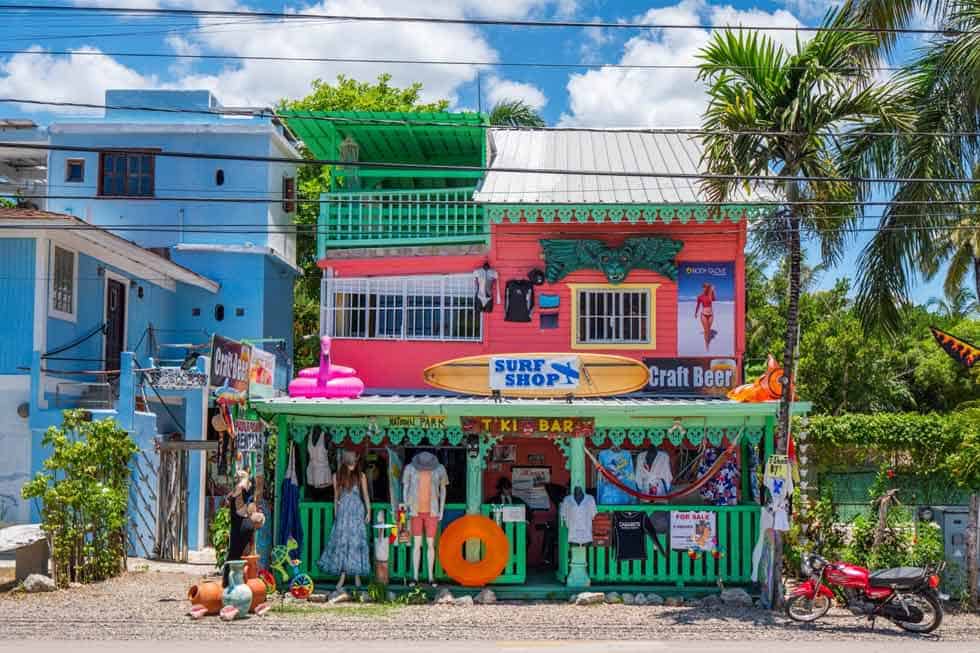
Costs vary widely based on your lifestyle and the destination you pick. Choosing locations with a lower cost of living can significantly reduce expenses. Also, ensuring you have travel insurance is vital for covering unexpected medical emergencies. It prevents significant out-of-pocket spending if you get injured.
Surf destinations cater to all levels of surfers. Picking one that matches your skills can save on expensive lessons. Plus, bringing versatile surfboards can reduce the need to spend extra on renting different boards for varying wave conditions.
Bringing extra surf supplies can prevent you from buying overpriced items at your destination. Always check visa requirements and vaccination needs well in advance to avoid fines for overstaying or being unvaccinated.
Traveling during shoulder seasons can help you save on costs and allows you to enjoy less crowded waves, enhancing both your experience and your budget.
Additionally, consider local transportation costs. Using shared rides or public transport instead of renting a car can reduce your daily expenses.
Planning with these costs in mind ensures you can focus on enjoying your surf trip.
Wave Season
Understanding the costs at your surf destination prepares you for the next crucial step: knowing the wave season. The timing of your trip affects the waves you’ll encounter, the crowd on the beaches, and your surfing experience.
Choosing the right wave season for your surf trip is important. The season can change your experience, from finding epic waves to experiencing fewer waves. Here’s a guide to help you identify the best times to surf at common destinations:

Choosing the shoulder season for your trip can offer benefits like fewer people and lower costs for accommodations and flights, while still providing the chance to catch some good waves. My trip to the Dominican Republic in May, as the peak season ended, struck a perfect balance with good waves, warm weather, and fewer competitors for waves.
Remember that wave seasons also depend on specific weather conditions like wind patterns and storms, which can impact wave quality. It’s beneficial to check local surf forecasts before your trip or speak with local surfers and surf shops for up-to-date information.
Happy planning, and hope to see you in the water!
Wind patterns
Wind patterns significantly influence your surfing trip adventure. They can enhance or diminish the quality of waves you discover at your destination. Winds blowing in the direction of the shore tend to disrupt wave conditions, resulting in them being uneven and less suitable for surfing.
Offshore winds streamline the waves, crafting perfect barrels that every surfer loves to ride. Checking local wind conditions before getting to the beach is important.
This action guarantees you encounter the most favourable waves for a memorable session.
Offshore winds equate to clearer waves, a surfer’s dream.
Understanding wind patterns is also beneficial for deciding when to surf throughout your trip. The early hours are frequently characterized by milder winds, resulting in superior wave conditions compared to afternoons when winds may intensify.
By synchronizing your surf sessions with periods of positive wind conditions, you optimize your opportunities of riding grand waves and experiencing more enjoyment in the water. Maintaining an awareness of weather forecasts and local wind updates is crucial as they are essential resources for any successful surf trip preparation.
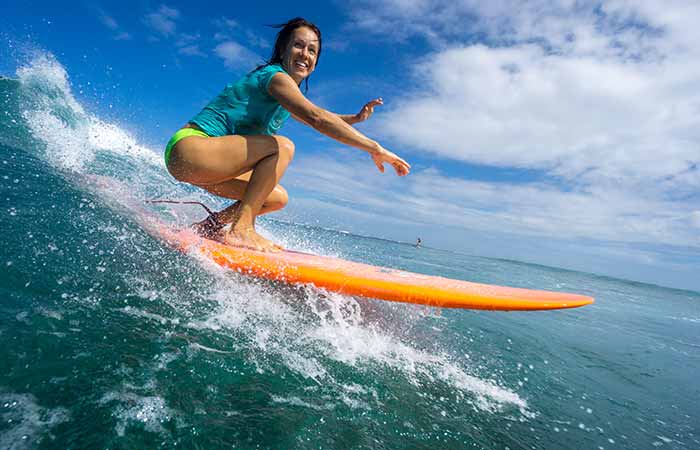
Rainy seasons
After comprehending the wind patterns of your selected surf destination, it’s pivotal to take into account the rainy seasons. Precipitation can substantially affect both wave conditions and your complete surf trip experience.
Rainy seasons differ greatly across various regions, affecting beyond daily surfing plans to travel logistics and gear preparation. For example, some zones acknowledged for enormous waves may experience a reduction in surfable days due to storm-triggered conditions during the height of rainy months.
By coordinating your trip with a location’s dry or early rainy season whenever feasible, you can relish more regular waves and less populated lineups. This strategy lets you optimize your time on water while reducing meetings with disadvantageous weather patterns that could influence your surfing enjoyment.
Try the shoulder surf season for lower prices and less crowds
Travelling during off-peak times can be a strategic decision for surfers aiming to economize and deter substantial crowds. Such periods occur just prior to or following the high season and promise comparable weather and wave conditions, but with reduced crowd sizes and frequently lower costs for lodgings and airfare.
Picture yourselves riding the waves at your preferred spots without the need to wait your turn or battling over waves. Strategizing your trip around these months lets you reap the benefits of superior rates and explore sought-after destinations in a less frantic environment.
Opting for the off-peak period allows you exclusive access to more beaches, facilitating the catching of large waves without the mob. It’s ideal for starters desiring the liberty to learn and veteran surfers longing for tranquillity.
This approach is effective at numerous surf camps globally, where you can relish high-grade waves at a portion of the price. Up next, ensure that all your must-haves are prepared for a memorable escapade.
Get your essentials
Make sure to pack your must-haves: a travel document allowing you entry, shots to keep you healthy, know where the local doctor is, and learn about the place’s rules. Ready for more? Keep reading for exciting tips on planning your surf trip.

Visa
Review the visa requirements for your surfing destination early to prevent unforeseen issues. Certain nations require a visa if your stay exceeds 30 days. Lack of the correct visa can lead to penalties or prohibition of future entry.
Each nation follows its own guidelines, so it’s necessary to comprehend what is needed. Organize all essential documents in advance to make sure there are no delays in your expedition.
“Over staying a visa’s stay limit can result in severe penaties.”
Investigating visa stipulations also requires awareness of local customs surrounding them. This step is critical while planning your pursuit of big waves, demonstrating respect and comprehension of the destination’s cultural and legal stipulations.
Vaccinations
Check for any needed shots or health steps before your surf trip. Some places you might go surfing require certain vaccinations. This keeps you safe from illnesses common in those areas.
Find out what shots you need well in advance. Some vaccines need time to start working, and others might need more than one dose.
Local healthcare centers can tell you which vaccinations are necessary for your destination. It’s also a good idea to have a basic health check-up before leaving. This ensures you’re fit for the adventure ahead and brings peace of mind while riding the waves in new spots around the globe.
Always bring your vaccination records with you, just in case they’re needed during your travels.
Medical facilities
Check medical facilities near your surf destination before you go. Make sure they can handle emergencies, especially those related to surfing like reef cuts. A good travel insurance, like one from World Nomads Insurance, is key.
It covers injuries and medical issues from surfing and other ocean sports.
Carry items for active skin repair to treat any cuts quickly. This prevents infections and lets you keep enjoying the waves safely. Always have a first aid kit with you, packed with essentials for treating minor injuries on the spot.
Local rules and regulations
After evaluating healthcare provisions, it’s vital to concentrate on regional norms and legalities to guarantee a hassle-free surf trip. Valuing the ecology is paramount. Consistently abide by set rules and manage waste correctly.
A lot of sites have specific laws purposed for conserving their aesthetic landscapes and wildlife. For example, certain beaches mandate visitors to ensure no trash is left behind to keep cleanliness for everyone.
Educating oneself from my surfing experiences in diverse nations, and complying with local laws shows consideration and also averts unnecessary penalties or legal problems. In some locations, violating ecological laws can lead to considerable fines or even being barred from reentering the nation.
Comprehending and esteeming local rules is not solely about being law-abiding; it’s about demonstrating gratitude for the communities that accommodate us.
Read up on local culture
Learn a bit of the local language before you go. Knowing how to say hello and thank you can open doors and smiles in any country. Also, check out what is polite or rude there. Every place has its own set of rules, and it’s cool to know them ahead of time.

Learn some language
Gaining some understanding in the local dialect can enhance your surf trip experience. Simple acknowledgments or expressions of gratitude demonstrate respect for their traditions and often results in warm exchanges with residents.
This initiative can assist you in creating connections, making your journey more valuable and genuine.
For female voyagers, knowing how to respectfully decline or comprehend the local dress code is particularly important in traditional regions. It signifies an understanding of the native customs, preventing awkward circumstances.
These manageable steps in acknowledging language and customs enrich your trip while also fostering a deeper bond with the community and surroundings.
Read up on Do’s and Don’ts
After refreshing your memory with some local phrases, it becomes vital to grasp the cultural norms of your surf spot. Giving due regard to these norms assists in immersing yourself and showing respect.
For example, becoming aware of a place’s conservatism level can suggest suitable dressing choices. In numerous surfing locales, local traditions might necessitate women to be more modest in their attire than they usually are at home.
Foster sustainable travel by diminishing waste and preserving water.
Also, bear in mind that minor efforts can have a significant impact while visiting a foreign country. Using a refillable water bottle minimizes plastic waste. Applying coral-friendly sunscreen safeguards marine life while you savor the waves.
Acquainting yourself with these guidelines before your journey ensures you leave only footprints behind.
Surfboards and gear
Picking the right surfboard and gear is key to an epic surf trip. Think about if you want to bring your own board or rent one when you get there, and don’t forget essentials like a wetsuit for cold water, boardshorts for warmer climates, and a first aid kit for safety.
What surfboard to bring or hire locally
Choosing the right surfboard for your trip can make a big difference. If you’re going to a spot with different wave conditions, bring a fish board. It works well in small or mushy waves.
Before you pack, look up the local surf conditions. This helps decide what board suits best.
Some places have plenty of surf shops where you can rent gear or buy extra supplies. In remote areas, finding these shops might be harder. From my own trips, I’ve learned it’s good to have options.
You can also ask locals or at surf camps about the best boards to use or rent there. They know the waves and can give great advice on what works best in their area.
Wetsuits or boardshorts
Deciding between wetsuits and boardshorts depends on the water temperature at your surf destination. Wetsuits keep you warm in cold waters, making them essential for surfing in cooler climates.
On warmer trips, boardshorts are all you need to enjoy the waves under the sun. Before leaving, check the local water climate online to see if you should pack a wetsuit or stick to boardshorts.
From my own experiences surfing around the world, I’ve learned how crucial this choice can be for comfort and performance. Surfing in chilly waters without a wetsuit can cut your session short due to cold, while wearing one in tropical temperatures might overheat you quickly.
Always research ahead; it makes a big difference in enjoying those perfect surf days fully.
Availability of surf shops
Checking for surf shops before your trip is smart. Some places have plenty of stores, while others might not. This matters if you need extra gear like fins or leashes. In remote areas, finding surf supplies can be tough.
Shops may run low on things you need. Knowing where to find a shop can save your day if you break something or forget an essential item.
We learned from living in the Dominican Republic that knowing local shop hours and rules helps a lot. Sometimes, you might think of packing extra supplies just in case the nearest shop has limited choices or odd hours.
Planning ahead means more time surfing and less time worrying about gear.
Bring a reusable water bottle
After checking out surf shops, think about staying hydrated. Take a reusable water bottle with you. This choice helps the planet by reducing waste. Plus, insulated bottles keep your drink cool in the sun.
These bottles are easy to carry too. You can attach them to your gear or board.
Opting for a reusable bottle is smart during long surf sessions. It ensures you stay hydrated without harming beaches and oceans with more plastic waste. A good water bottle is a surfer’s best friend, making it as essential as their board and wetsuit for an enjoyable day catching waves.
Sunscreen / Mosquito repellant
Pack quality sunscreen for your surf trip. This will save you from sunburn and skin cancer. Choose water-resistant sunscreen to stay protected in the water. Prices are high at tourist spots, so bring enough from home.
Also, don’t forget mosquito repellent. It keeps away bugs and makes your trip more enjoyable. Protecting your skin is as important on land as it is in the sea.
First aid kit
A first aid kit is a must-have on your surf trip. It lets you treat small cuts and injuries without delay. Imagine getting a cut from coral or a sea urchin sting; with items like Hemostatic Gauze and Sea Urchin Spin Probe in your kit, you can handle these situations right away.
Surfers often recommend the Surfers First Aid Kit because it’s made just for them. As an OMBE member, you even get to save 25% off this kit with code “SURFER.” I learned how vital this was during my last trip when a quick bandage job kept a minor injury from ruining my day.
Next up, let’s talk about getting good travel insurance before hitting the waves.
Get a good travel insurance
Getting the right travel insurance is key for a worry-free surf trip. Look for policies that cover high medical costs in case of emergencies. World Nomads stands out as a great option for surfers.
They offer 24-hour help, flexibility to adjust your plan, and coverage for adventure sports. This kind of protection makes sure you can focus on catching waves instead of worrying about what-ifs.
Make sure your insurance matches your surfing adventure needs. Check that it includes emergency assistance services and covers activities like surfing. With World Nomads, you’re getting peace of mind knowing they understand the unique needs of surf travelers.
Their round-the-clock support means you’re never alone, no matter where your board takes you around the globe.
Consider the North coast of the Dominican Republic
The North coast of the Dominican Republic offers amazing waves year-round. It’s a spot with fewer people and plenty to do besides surf.
Low crowds
Choosing the North coast of the Dominican Republic means you won’t have to deal with packed surfing beaches. This area is known for having fewer surfers, making it a perfect spot if you’re looking to catch waves without too many people around.
You can enjoy more space in the water and on the sand.
Surfing here during shoulder seasons is even better for avoiding crowds. This tip helps find that sweet spot between peak and off-peak times, offering good prices and manageable tourist numbers.
With planning, surfers get ideal conditions without competing for waves or waiting their turn too long.
Easy to get to
Travelling to the north coast of the Dominican Republic is a breeze. The area’s accessible location makes it perfect for surfers looking for an easy trip. Flights are frequent and connect from many international airports, dropping you close to the waves without hassle.
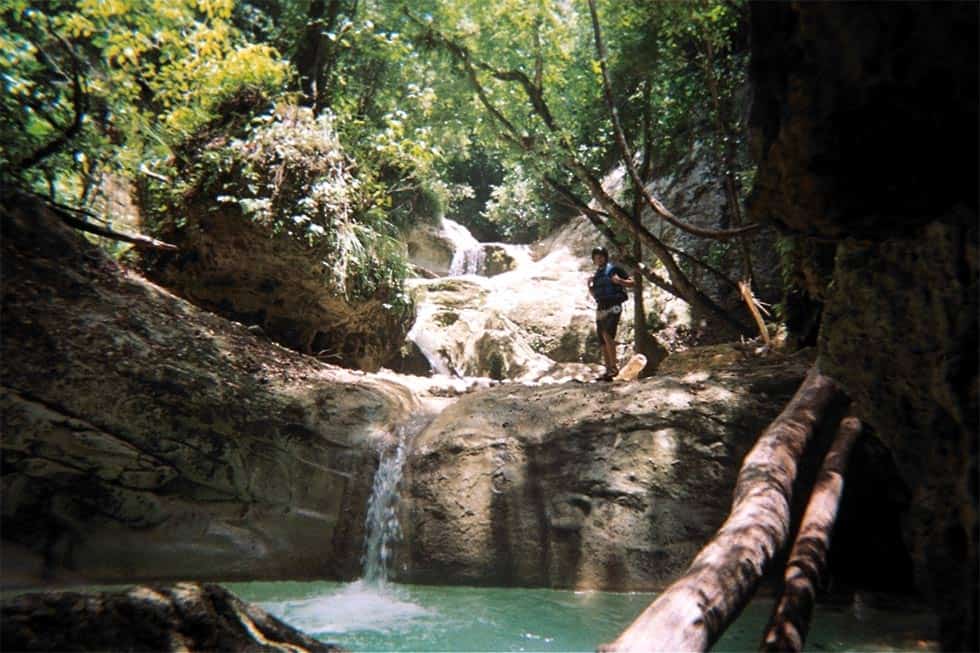
Clare & Jeroen Mutsaars, founders of Swell Surf Camp, have spent over a decade in this surfer’s paradise and know all about making travel smooth for their guests.
The camp is just a stone’s throw away from key spots with year-round surf, meaning less time traveling and more time riding waves. With such an ideal setup, beginners and seasoned surfers alike find this destination hard to beat.
Get ready to pack your bags because adventure awaits on sandy beaches under sunny skies. Next up: learn how surfing gear plays into your perfect wave chasing experience.
Abundance of non surfing activities
The North coast of the Dominican Republic is more than just waves; it’s a paradise for those who love to explore beyond the beach. You can snorkel in clear waters, try paddle boarding, or simply soak up the sun on beautiful beaches.
For those interested in local culture, there are historical sites to visit, traditional cuisine to taste, and friendly locals to meet. The area also offers hikes in nearby mountains and waterfalls that are nothing short of breathtaking.
We’ve spent over a decade living here and have found that there’s no shortage of things to do off your board. Yoga by the beach provides a perfect way to stretch out after a day of surfing or you could unwind with some spa treatments.
The vibrant nightlife is worth checking out too! This mix of surf and non-surf activities ensures everyone has something they’ll enjoy, making it an ideal spot for both surfers and their companions looking for variety in their holiday adventures.
Year-round surf
The North coast of the Dominican Republic stands out for its surfing, offering waves all year. Surf newcomers find April to October perfect with gentler waves. For those seeking more challenge, November to March brings stronger swells.
Famous spots like Encuentro, La Puntilla, and La Preciosa welcome surfers any month. Our camp is near these top sites, making it easy to catch the best surf.
Surfing in Cabarete isn’t just about catching waves; it’s a chance to immerse in local culture and enjoy water sports all year long. From personal experience living here over ten years, every day is a new adventure on the water whether you’re surfing or windsurfing.
With Swell Surf Camp close by, learning and improving your skills happens naturally against a backdrop of endless summer vibes and welcoming locals ready to share their ocean home with you.
FAQs
1. What are the key factors to consider when planning the perfect surf trip?
When you’re planning your dream surf trip, it’s important to research about the best surfing spots, check out weather forecasts for optimal wave conditions and ensure that you have all necessary gear.
2. How can I choose the best destination for my surf trip?
Choosing a great destination involves considering factors like local climate, water temperature, wave conditions and crowd levels. It also helps to know if there are any local surfing schools or guides available in case you want some professional advice.
3. What kind of gear should I pack for my surf trip?
For a successful surf trip, packing essentials include not only your board but also wetsuits appropriate for water temperatures at your chosen destination along with other accessories like sunscreen, towels and repair kits.
4. Can I plan a budget-friendly surf trip?
Absolutely! With careful planning around off-peak seasons and by choosing less touristy destinations, one can enjoy an amazing surf experience without breaking the bank.
-
WHERE IS SWELL LOCATED?
Swell Surf camp is located on the North coast of the Dominican Republic, right in the center of the cool surfer town of Cabarete. With 3 international airports to choose from it's also one of the easiest places to get to for a quick surf getaway. Puerto Plata Airport is only 25 minutes away from Swell. On the' getting here' page you'll find the different options of getting to us.
-
ABOUT SWELL SURF CAMP
Founded in the winter of 2009, Swell Surf Camp emerged from Jeroen and Clare Mutsaars vision. They lived in the Dominican Republic for eight years and spotted a gap in the surf camp market for higher quality accommodations combined with an engaging social atmosphere. Their extensive travel and stay experiences across different countries like Costa Rica, Nicaragua, Peru, Hawaii, Indonesia and various European nations fueled their passion to elevate the surfing retreat experience.
Swell Surf Camp is renowned as the world’s first luxury surf camp tailored specifically for beginners. The founders collaborated with a notable Swiss architect to design facilities that blend comfort with style. This innovative approach ensures every guest enjoys superior lodging and amenities. Since its inception, Swell has taught over 9,000 people how to surf with an emphasis on safety, fun, and structure.
Our achievements speak volumes. Swell has collected numerous accolades and maintains hundreds of stellar reviews from guests globally. Recognized repeatedly as the leading destination for luxury surf vacations, our commitment to excellence keeps us at the forefront of the industry.
Beyond surfing, Swell offers a diverse range of activities including kitesurfing, wingfoiling, and yoga classes. Guests can also enjoy horse riding both on scenic beaches and mountain trails—plus exciting adventure-filled excursions like canyoning.
A crucial element of any vacation is food, and here at Swell we excel. We provide delicious home-cooked meals daily. For evenings out, guests find themselves just minutes away from an array of dining options that promise satisfying culinary adventures.
For those who prioritize upscale amenities and wellness in a unique setting built around learning surf skills amid profound natural beauty, Swell should be on the top of your surf destination list
-
WHAT TO EXPECT FROM A 1 WEEK LEARN TO SURF HOLIDAY
Dreaming of catching your first wave but wondering if surf lessons are really for you? At Swell Surf Camp, our lessons are designed specifically for beginners, and we mean absolute beginners, particularly those between 40 and 55 from cities like New York, Boston, or Toronto. You’ll never feel rushed, lost, or out of place. Our expert instructors genuinely love teaching, and their approach is as much about encouragement as it is about skill-building. Every instructor carefully tunes each lesson to fit one person, you, so you always get personalized support, whether you’re working on basic paddling, learning to pop up, or building confidence in the water.
The journey at Swell Surf Camp is about progression, not perfection. You’ll start with the very basics, practicing on the sand before moving into gentle ocean waves with your instructor right beside you. Throughout every lesson, our focus is on clear communication, safety, and keeping things fun. As you progress, our instructors give you feedback in real-time, helping you celebrate small wins and guiding your next steps. You’ll learn solid surfing foundations, water safety, and even the unwritten rules of surf culture. By the end of your stay, you’ll be amazed at your own growth and how natural surfing feels. Don’t wait to discover how transformative a single lesson can be, book your surf adventure at Swell Surf Camp and let your surfing journey begin!
-
WHAT SPORTS DOES SWELL OFFER?
It's not only surfing that's on offer at Swell, we also offer learn to wingfoil and learn to kitesurf packages.
